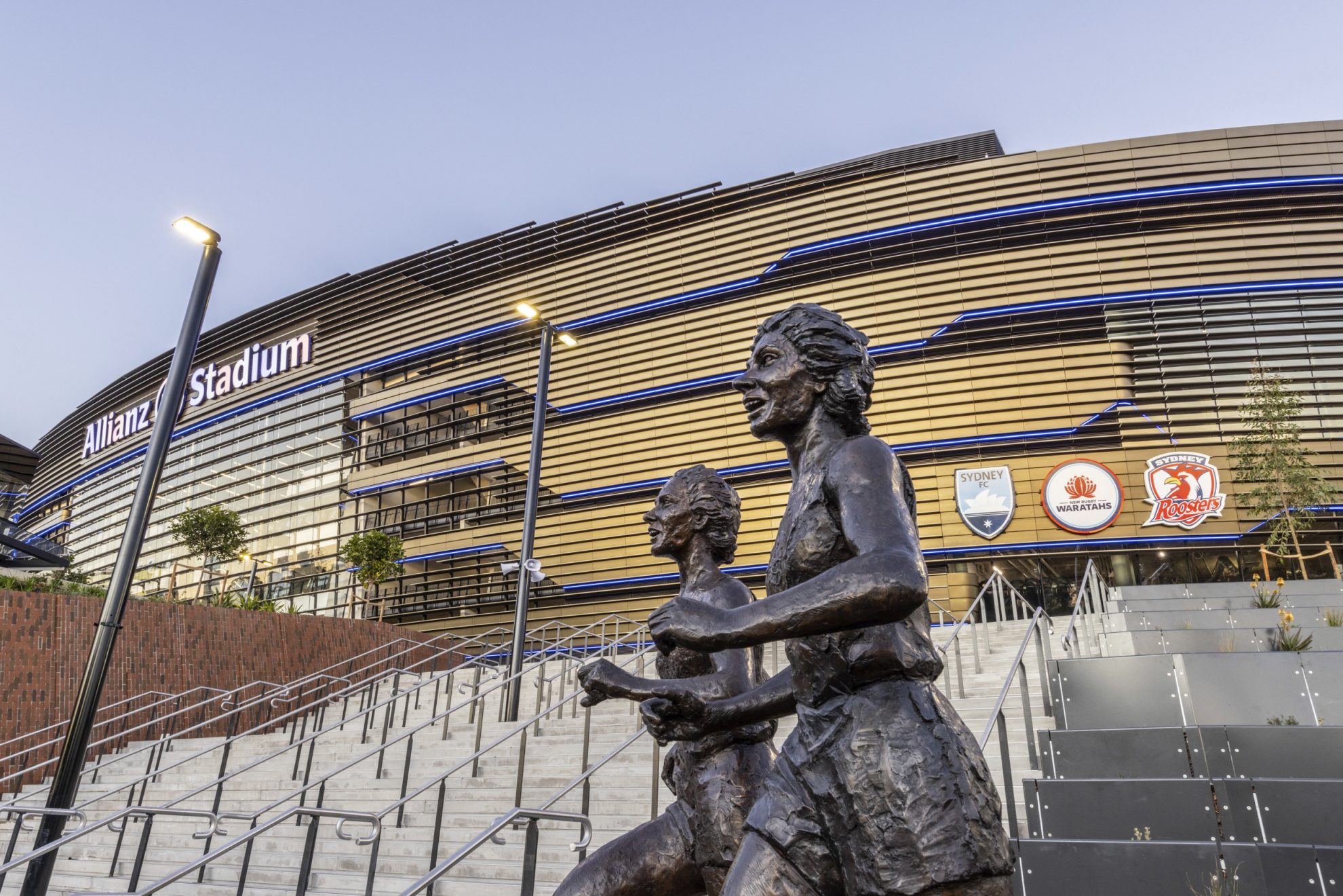Designing for equality: the small design choices that set a new benchmark for inclusive design at Allianz Stadium

This article is an extract of a speech delivered by Director Alex Small, as part of COX Architecture’s contribution to Equity by Design ‘7 Switches Framework’.
As architects and designers, our role in shaping the built environment extends far beyond just bricks and mortar, directly impacting how people move through the world. It’s a big responsibility, and one that requires us to challenge outdated norms so that we can improve accessibility and inclusivity in the built environment. This is particularly important in public areas, where design has often perpetuated inequality.
Over the decades, large venues have reinforced these inequalities by settling for minimum standards that fail to support the real needs of diverse users.
At Allianz Stadium, we embraced this responsibility. Far from just superficial adjustments, we saw an opportunity to create a meaningful change for its users. By interrogating every aspect of the design, we ensured inclusion and equality—both for the athletes on the field as well as the thousands of people in the stands.
One of the most impactful changes was the redesign of the athlete changing facilities. Instead of primary changing rooms that catered only to men, we designed them to support the needs and preferences of both female and male players, providing equal access to critical spaces like the pitch, tunnel club and support services.
For spectators, we recognised that simply meeting accessibility requirements wasn’t enough. Women have historically faced disproportionate challenges in stadium environments, from inadequate bathroom facilities to long queues. We addressed this through strategic interventions, including gender-neutral baby change areas and bathrooms that would, for example, make it easier for dads to take their daughters to the bathroom, while also increasing female amenities to better serve all patrons.
Accessibility was another key principle. Far from an afterthought, we designed with wheelchair users in mind from the outset—prioritising clear sight lines, proximity to universal access facilities and flexible seating configurations to support different group needs. Recognising the often-overlooked experiences of neurodivergent individuals, the stadium also introduced a sensory room, ensuring it was a place where everyone feels welcome.
Perhaps the most powerful takeaway from this project is that small, intentional design choices can have far-reaching impacts. Whether it was the placement of the Changing Place adult care room – accessible both from the stadium and the public concourse – or the thoughtful reconfiguration of restrooms, these seemingly minor decisions challenge traditional models and set a new benchmark for inclusive design.
Our contribution to the new Equity by Design ‘7 Switches Framework’ reinforces our ongoing commitment to this design ethos. The report, developed by the Champions of Change Coalition, of which COX is a founding member, provides a structured approach to embedding equity into all decisions and development processes.
The framework is a call to action to all of us working in architecture and design to move beyond minimum compliance and design with empathy, foresight and a deep understanding of the nuanced needs of our communities – so that we can shape a future where everyone matters.
Download the report in full here.